A Very Rare and Possibly Unique Écorché Figure
A Very Rare and Possibly Unique Écorché Figure
After a model by Michael Henry Spang (died 1762). The reduced version of a life-size figure in plaster of William Hunter, used for teaching at the St Martin’s Lane Academy in London circa 1753
Bronze
English
Second half 18th Century
SIZE: 24cm high - 9½ ins high
After a model by Michael Henry Spang (died 1762). The reduced version of a life-size figure in plaster of William Hunter, used for teaching at the St Martin’s Lane Academy in London circa 1753
Bronze
English
Second half 18th Century
SIZE: 24cm high - 9½ ins high
A Very Rare and Possibly Unique Écorché Figure
After a model by Michael Henry Spang (died 1762). The reduced version of a life-size figure in plaster of William Hunter, used for teaching at the St Martin’s Lane Academy in London circa 1753
Bronze
English
Second half 18th Century
SIZE: 24cm high - 9½ ins high
After a model by Michael Henry Spang (died 1762). The reduced version of a life-size figure in plaster of William Hunter, used for teaching at the St Martin’s Lane Academy in London circa 1753
Bronze
English
Second half 18th Century
SIZE: 24cm high - 9½ ins high
These ecorché figures were once attributed to Italian Renaissance artists. Wilhelm Bode classified one in the hall of bronzes in the Kaiser Friedrich Museum in Berlin, now the Bode Museum, as ‘Venetian 16th century’. However, Dr William Hunter, a physician and teacher at the St Martin’s Lane Academy of Art in about 1750, had dissected and flayed the corpse of a condemned criminal and then meticulously made a life-size plaster model of it. He used this for teaching life drawing and the model was moved with the art school to the new Royal Academy in 1767. John Zoffany then portrayed Hunter with the life-size écorché figure in two paintings. It is thought that the Danish artist Michael Henry Spang studied anatomy with Hunter in St Martin’s Lane and made a wax reduction of the plaster figure which Spang exhibited at the Society of Artists in 1761. Soon after this he died and Hunter acquired the wax. Edward Burch was then employed by Hunter to cast a version in bronze after the wax in order to provide artists with a portable version of his life-size anatomical figure.
Other 18th century artists also probably made bronze casts as M Baker records Albert Pars being awarded a premium for a ‘cast of an Anatomy figure, after Spang’ in 1767 by the Society of Artists.
Since the renaissance flayed anatomical male figures have held a fascination for artists, and écorché figures remain a popular study for students of art and life drawing.
It should be noted, no other example can be found displaying the male ‘genitalia’. It has been suggested this rare bronze could perhaps be a private commission?.
Other 18th century artists also probably made bronze casts as M Baker records Albert Pars being awarded a premium for a ‘cast of an Anatomy figure, after Spang’ in 1767 by the Society of Artists.
Since the renaissance flayed anatomical male figures have held a fascination for artists, and écorché figures remain a popular study for students of art and life drawing.
It should be noted, no other example can be found displaying the male ‘genitalia’. It has been suggested this rare bronze could perhaps be a private commission?.
Ex Private Belgian collection
note:
For an example sold by Finch and Co, Ex collection the Earls of Warwick, Warwick Castle, listed in 1900 (Heirlooms) in the Armoury Passage as ‘Antique Bronze of Skeleton’, sold Sotheby’s, Syon Park, May 1997; Lot 9, Ex English Private collection, see: Finch and Co, catalogue no. 24, item no. 29, 2015
CF: other examples in Victoria and Albert Museum, London; Bode Museum, Berlin; The Louvre, Paris; and Metropolitan Museum, New York
note:
For an example sold by Finch and Co, Ex collection the Earls of Warwick, Warwick Castle, listed in 1900 (Heirlooms) in the Armoury Passage as ‘Antique Bronze of Skeleton’, sold Sotheby’s, Syon Park, May 1997; Lot 9, Ex English Private collection, see: Finch and Co, catalogue no. 24, item no. 29, 2015
CF: other examples in Victoria and Albert Museum, London; Bode Museum, Berlin; The Louvre, Paris; and Metropolitan Museum, New York
A Very Rare and Possibly Unique Écorché Figure
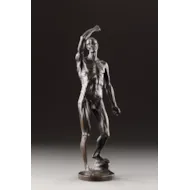
SOLD
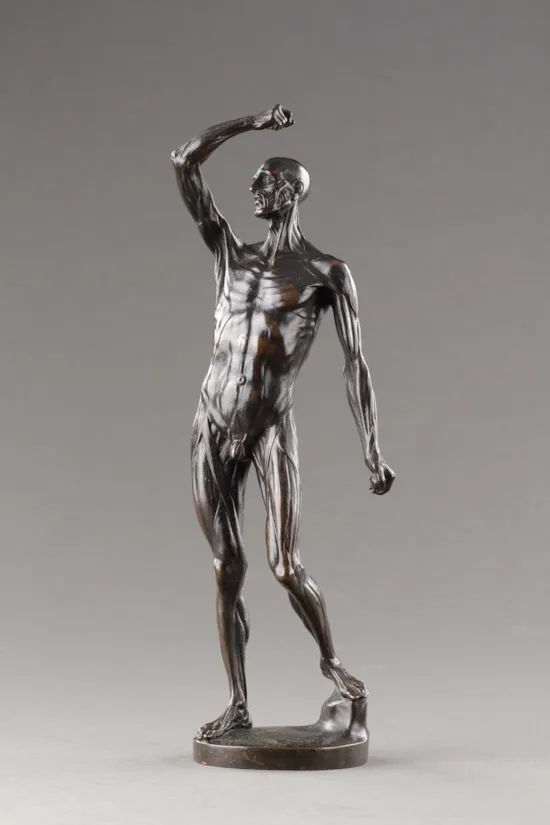
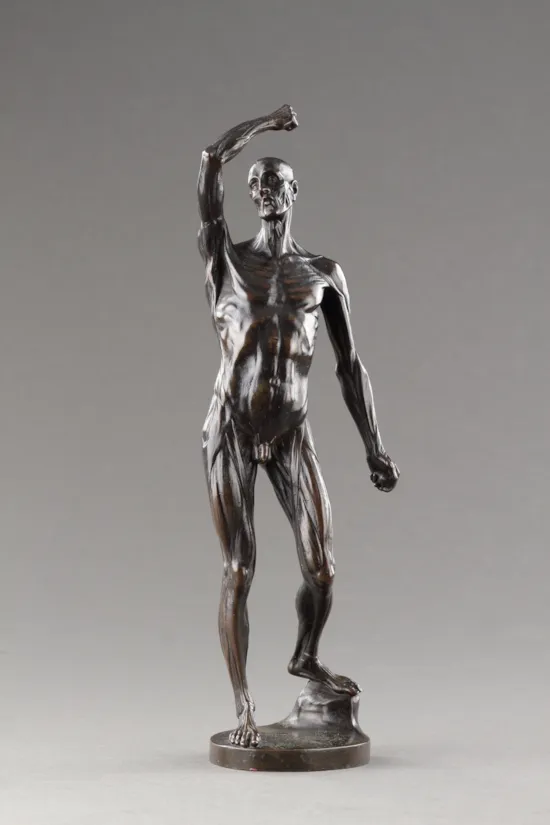

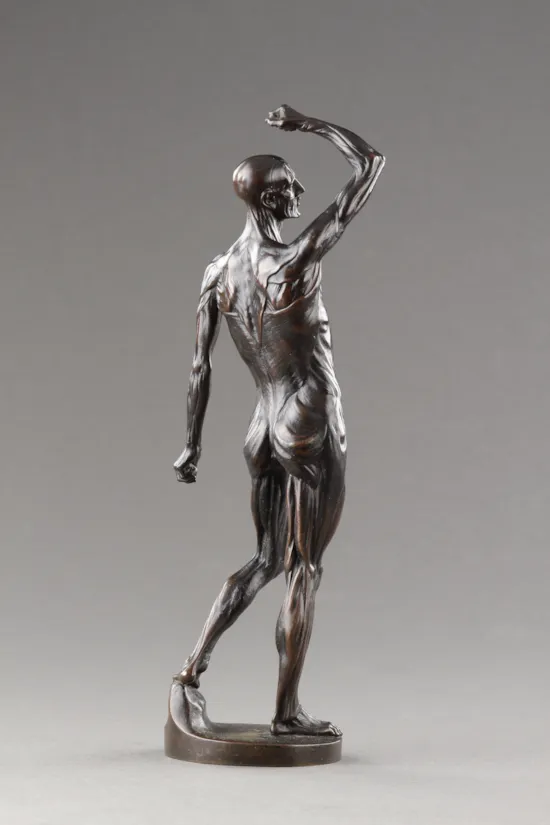
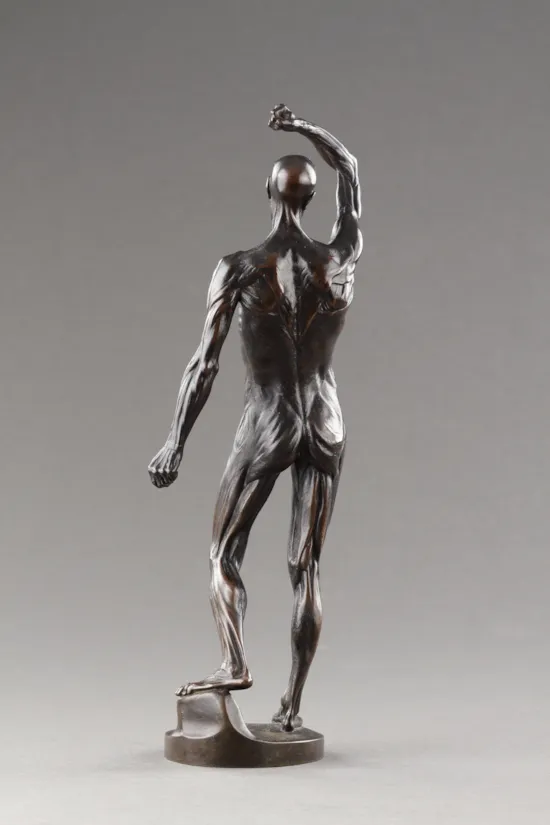
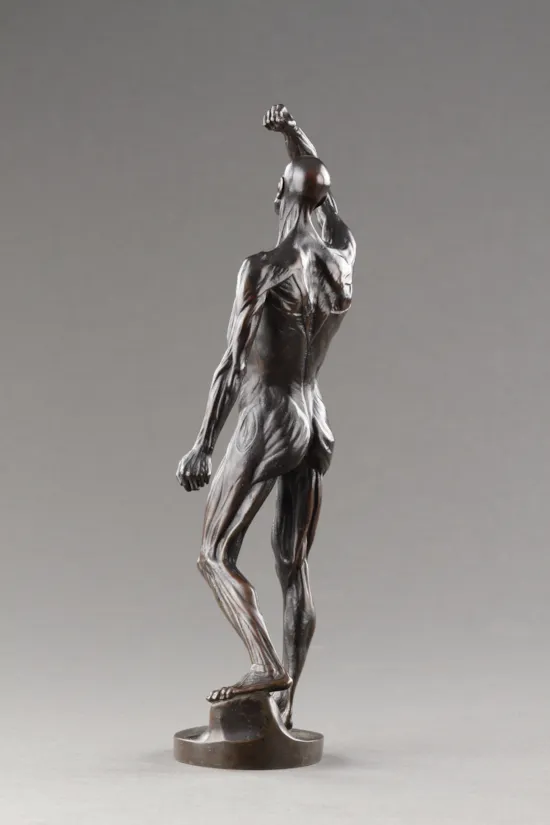
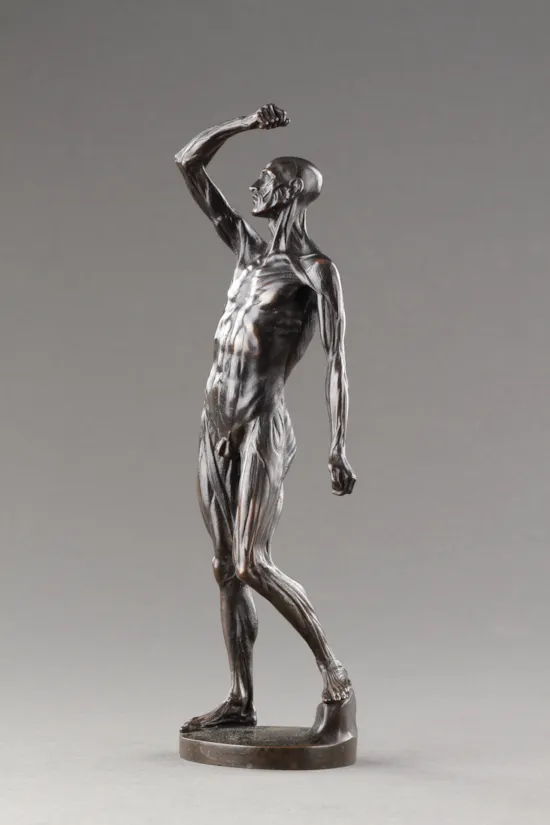
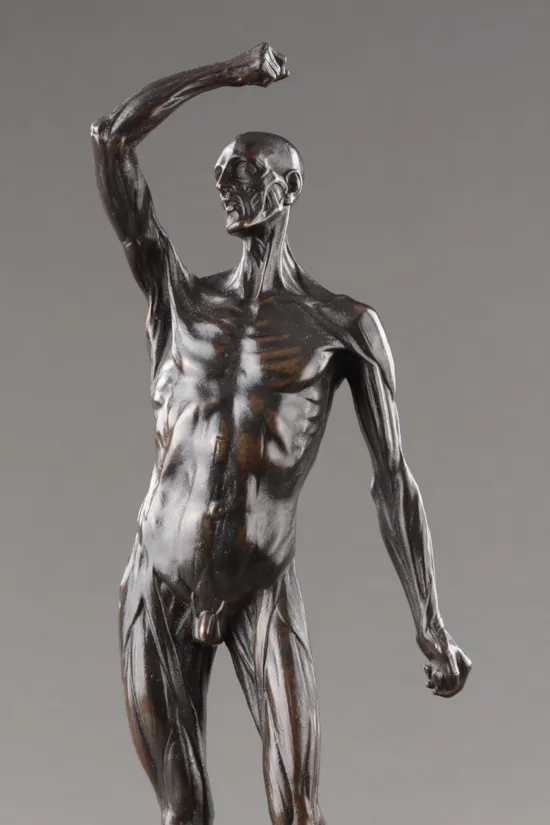
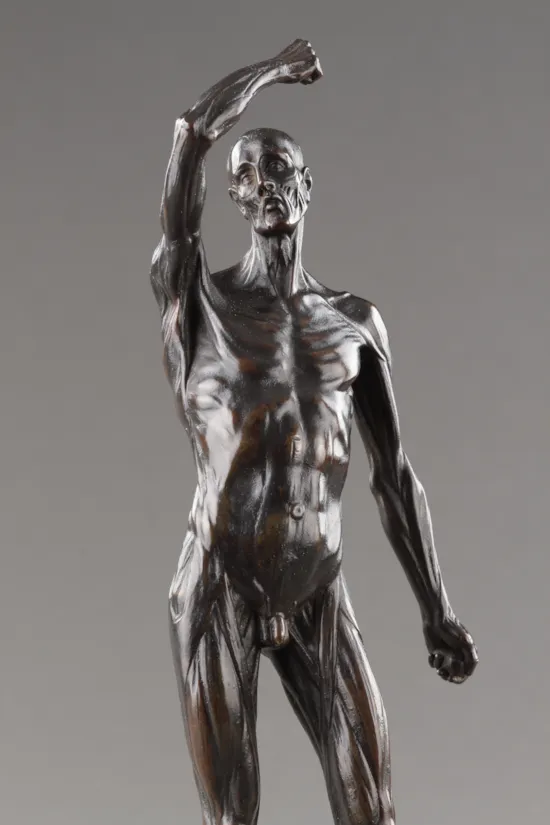
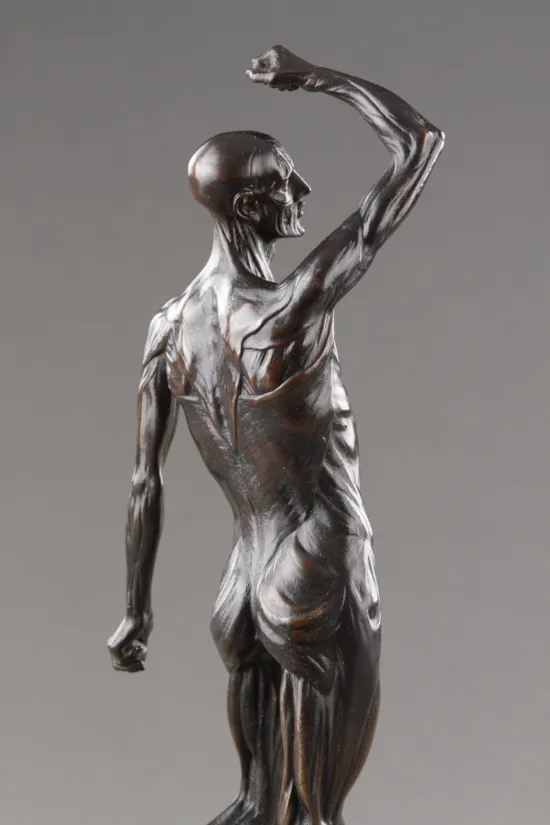
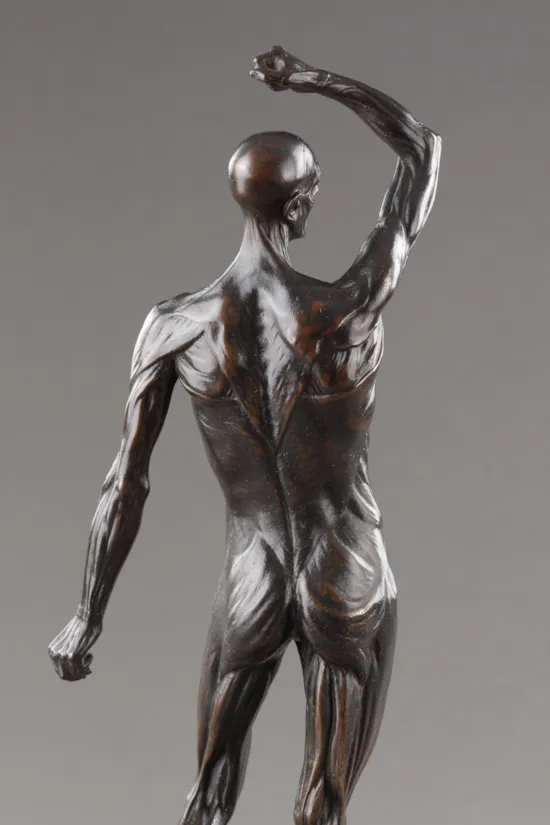

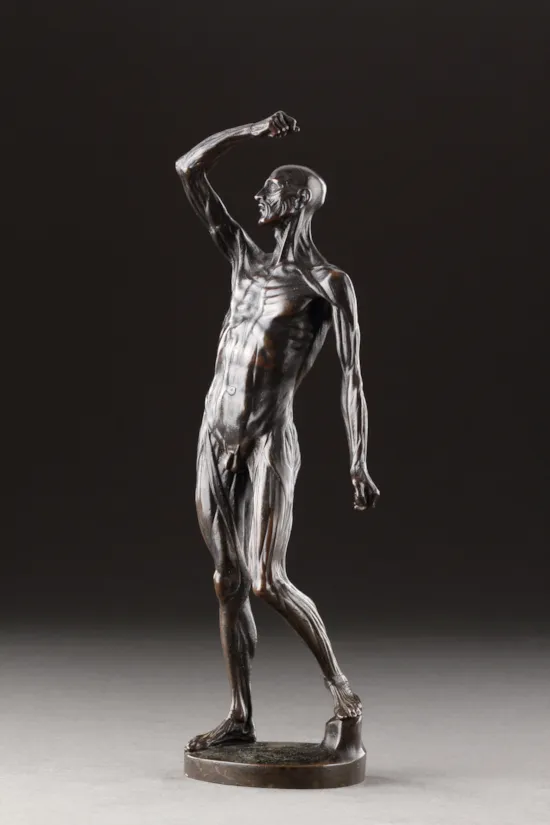
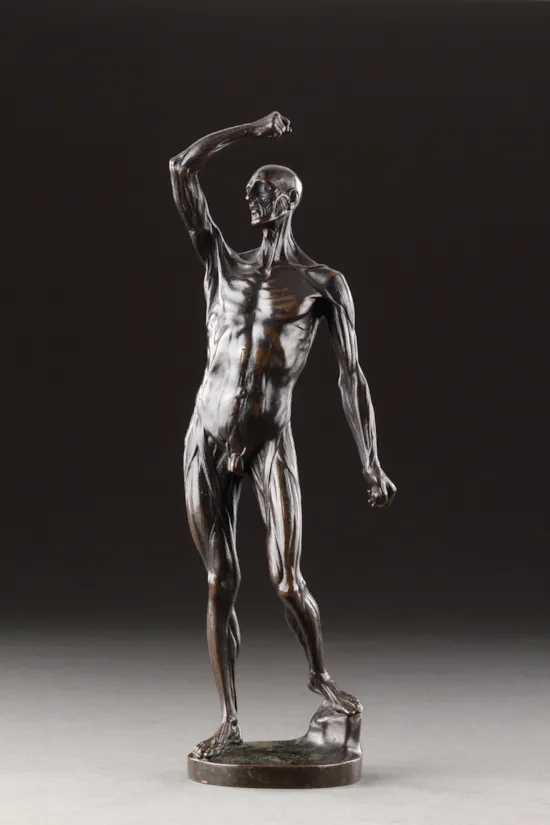
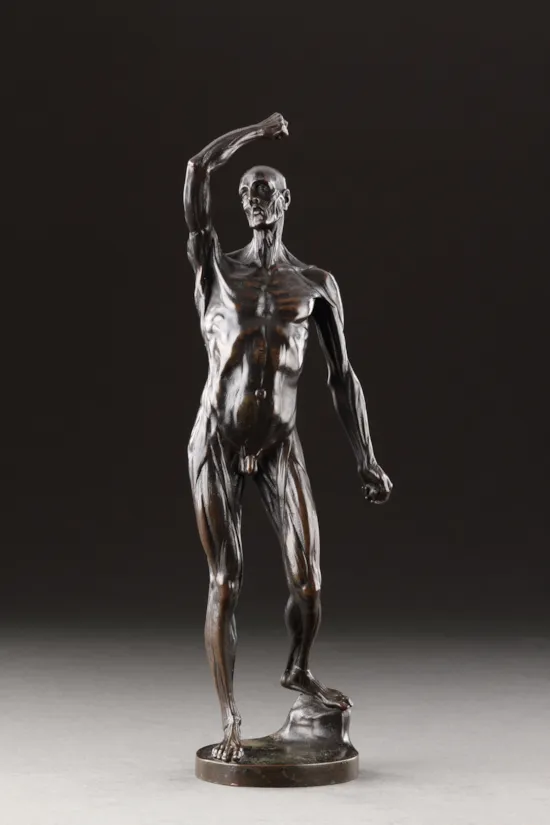
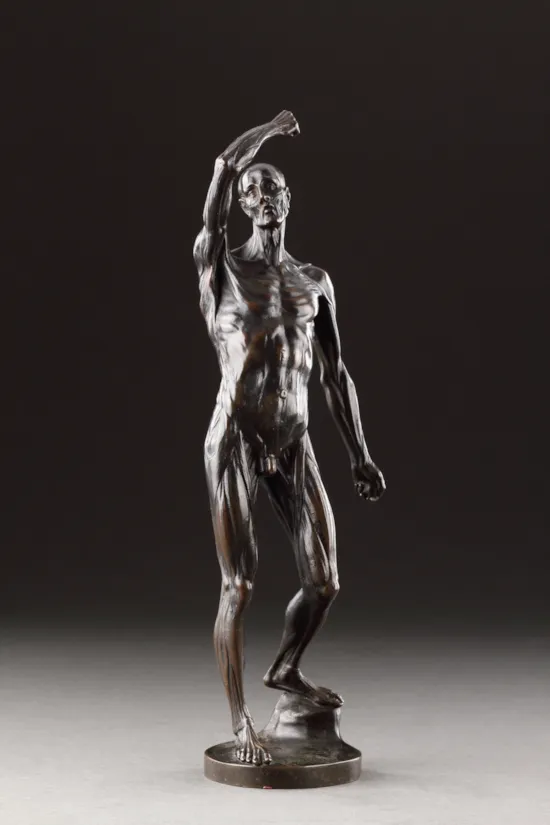
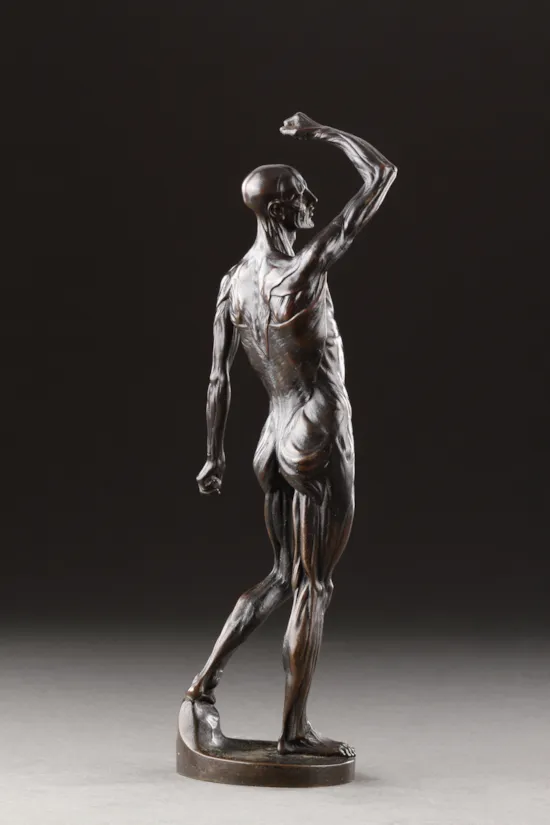
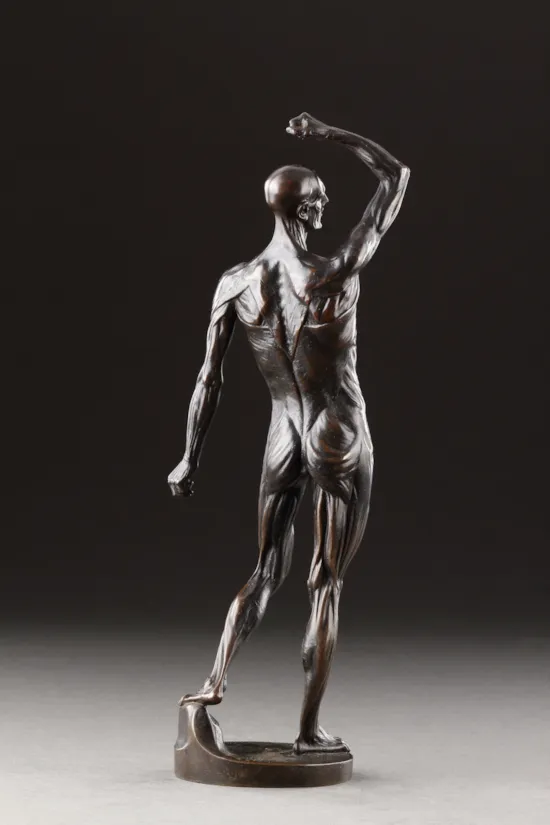
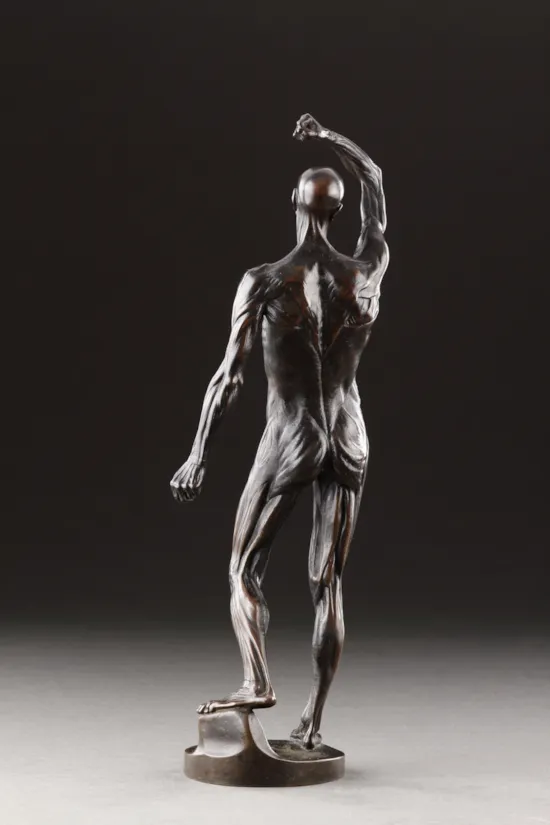





















YOU MAY ALSO LIKE

